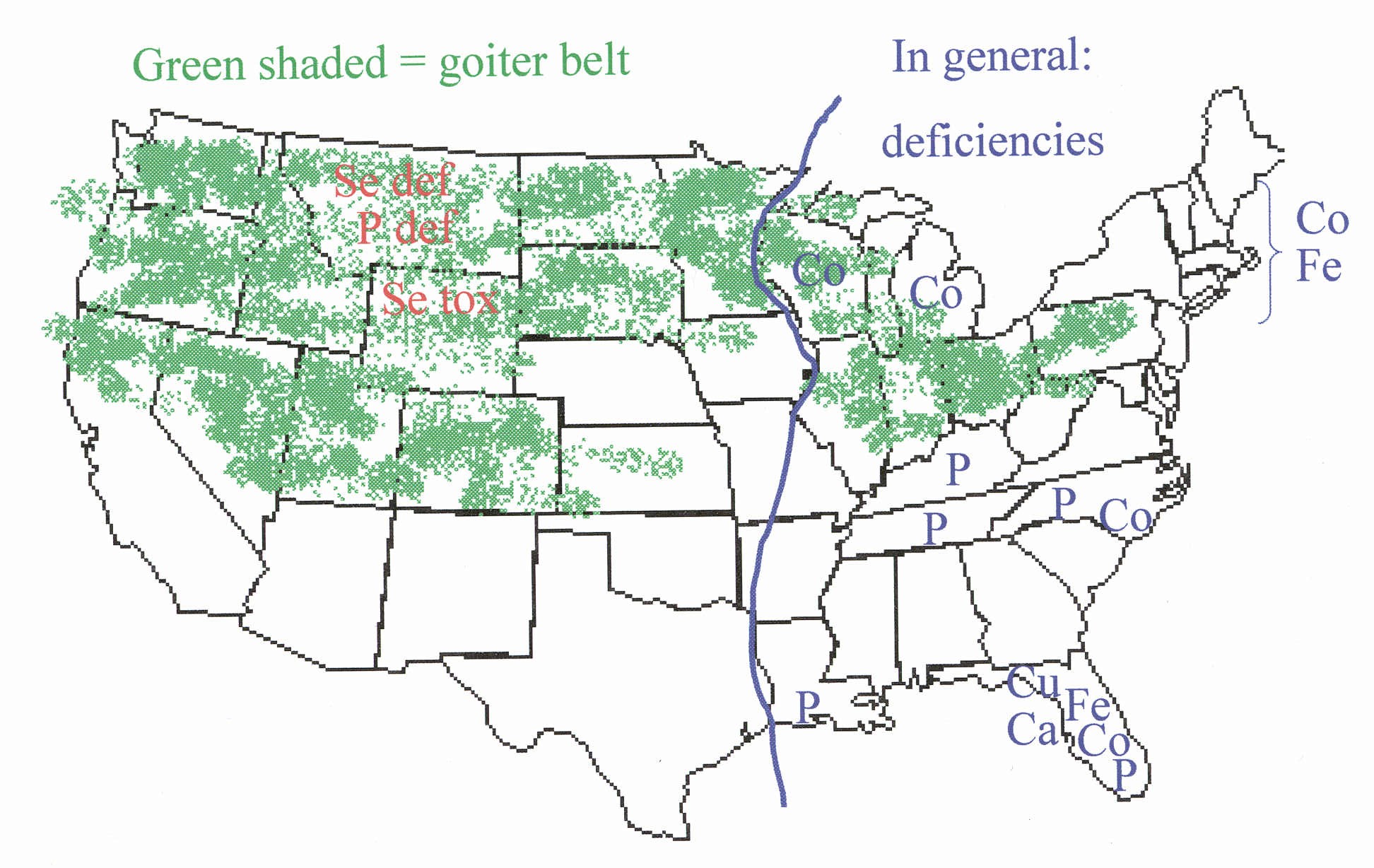
C. Replacement Heifers
1. Creep feeding replacements is debatable since weight gain is not marketed
2. Should be fed to attain 60-65% of anticipated mature weight at 15 months of age to calve 1st at 2 years of age.
- post weaning (7 to 15 mo. of age) ADG ~.75 to 1.25 lb/day
- low gains may delay puberty
- high gains may damage mammary developement
D. Bulls
1. Creep feed and then feed a high energy ration from weaning to 12-14 months of age.
2. Mature breeding bulls can maintain condition on same kind of pasture as the cow herd.
II. Finishing Rations for Market Cattle
A. General
1. The purpose of the finishing process is to produce beef that is desirable tot eh consumer.
2. Extreme Variation
- some go in at 400 lb and a few months of age
- some go in at 900 lb and over a year of age
3. Total dry feed intake will be from 2 to 3% of body weight, governed by energy content of the ration.
4. 400 lb calves - may want to feed roughage (~50%)
800 lb calves - full feed on grain
B. Nutritional Management of Finishing Cattle
1. Starting cattle on feed
a. Primary goal when cattle first arrive (few days) must be minimizing disease and death loss.
b. Extreme variation, so much judgement is needed.
- one method is to start on high roughage fed free choice and gradually replace roughage with grain. Antibiotics may be desireable for the first 10 days to 3 weeks.
2. Energy
a. Once cattle are on feed, the goal is to maintain maximum intake without causing digestive upsets.
b. Associative effects - effects that one feed can have on the utilization of another in the same ration.
(1) Can be negative or positive:
- negative exsists when concentrate is 60 to 75%; therefore the following feeding programs have been suggested:
(a) 2-phase
Phase 1 = ration contains 50 to 60% concentrate and fed from ~450 to 800 lb
Phase 2 = 800 lb to market, over 75% concentrate
(b) 1-phase = after adjustment to grain, increase to 75% or more concentrate and continue through market
3. Protein
a. Expressed as crude protein (CP) or metabolizable protein (MP)
- difference between the two is the early phases of calf feeding program
- MP suggests higher levels of protein at lighter body weights
- Both systems are similar for heavier cattle
b. Protein is expensive but a deficiency is more expensive than a slight exces because if a deficiancy occurs then energy will not be optimally utilized.
c. Protein can be natural or NPN
d. NPN best when:
(1) ration contains a high percentage of readily fermentable CHO
(2) Soluble N levels of the ration are fairly low
(3) Cattle being fed the ration have a relatively low protein requirement
e. NPN least utilized when fed to:
(1) young calves which have a high protein requirement
(2) calves that have been under stress and in transit (microbes)
(3) beef cows grazing on all range forage ration
(4) cattle consuming rations with high level of soluble N (legumes)
III. Miscellaneous Finishing Ration Ingredients
A. Minerals
1. Calcium - Generally adequate if the ration is 25% or greater forage (esp. legumes)
- Try to maintain 2:1 or higher CaP to prevent urinary calculi in feedlot steers (.5% NH4Cl or NH4SO4)
2. Phosphorus Deficiency unlikely on high concentrate diet, usually associated with feeds grown on P-def. soils
3. Salt Requirement of full-fed beef cattle met by including .25% in the total ration
4. Potassium
- Diets high in forage are generally adequate in K
- Cattle on high concentrate diets usually require K
- K requirement of stressed claves may be 2 X normal
5. Sulfur
- Been shown to be beneficial if NPN is used (S A.A.)
-Maintain a 10:1 urea N:S ratio
6. Trace Minerals
a. Geographic Problems

b. Magnesium and grass tetany
(1) Caused by ¯ serum levels of Magnesium (Mg)
(2) Occurs rapidly in lactating cows allowed lush pasture after over-wintering
- low Mg, high K, N ==> limited Mg absorption
- brought on by excitement, milking, transport, adverse weather
(3) Syptoms
- severe paddling
- tetany
(4) Prevention
- Mg supplements
(5) Treatment
- IV Mg and Ca
- sometimes sedatives
- MgSO4 enema
B. Vitamins
- many synthesized by rumen microbes and many inthe ration
- may need A,D,K
C. Ionophores
Improve feed efficiency, ¯ intake, tends to ADG
1. Rumensin (monensin)
2. Bovatec (lasalocid)